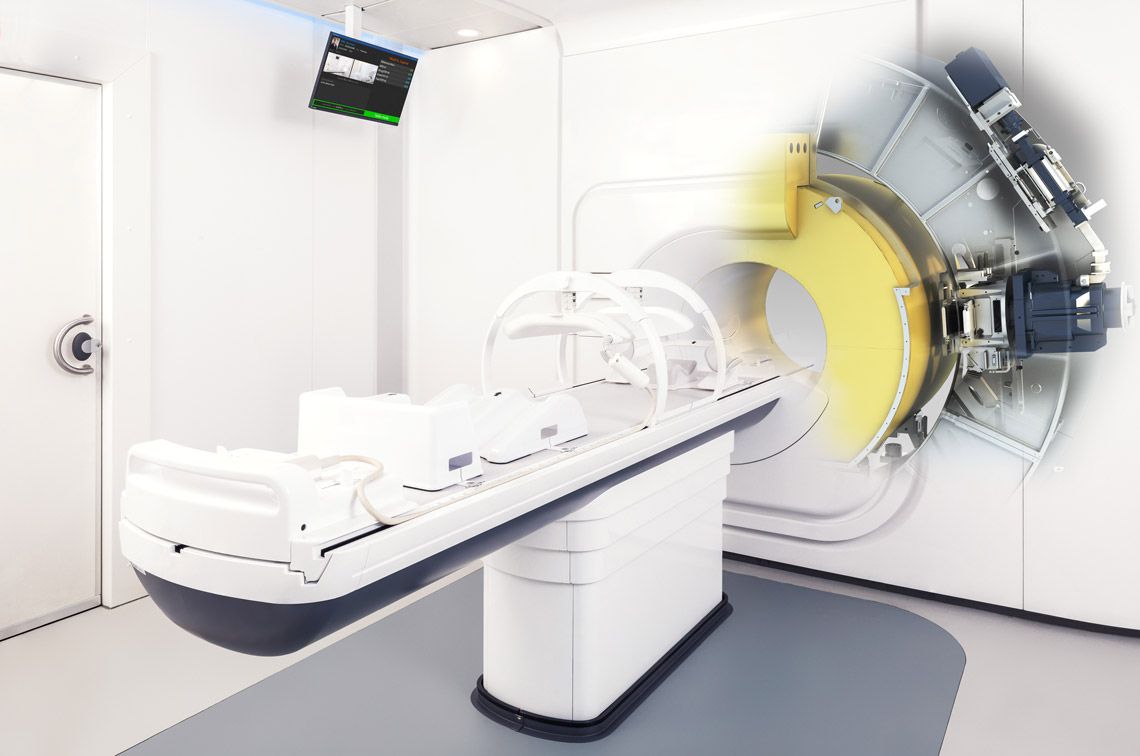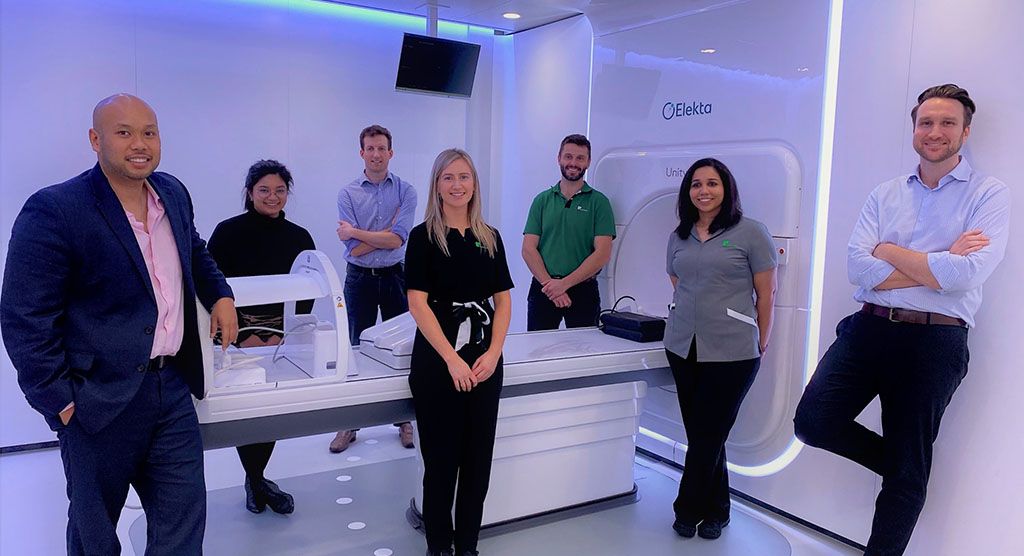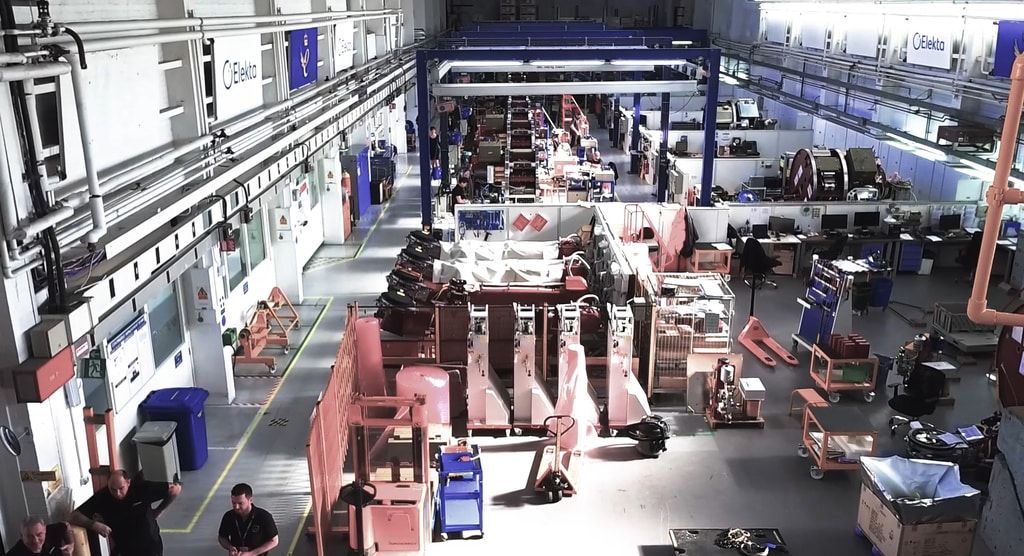Industrial design a key factor in medical device development
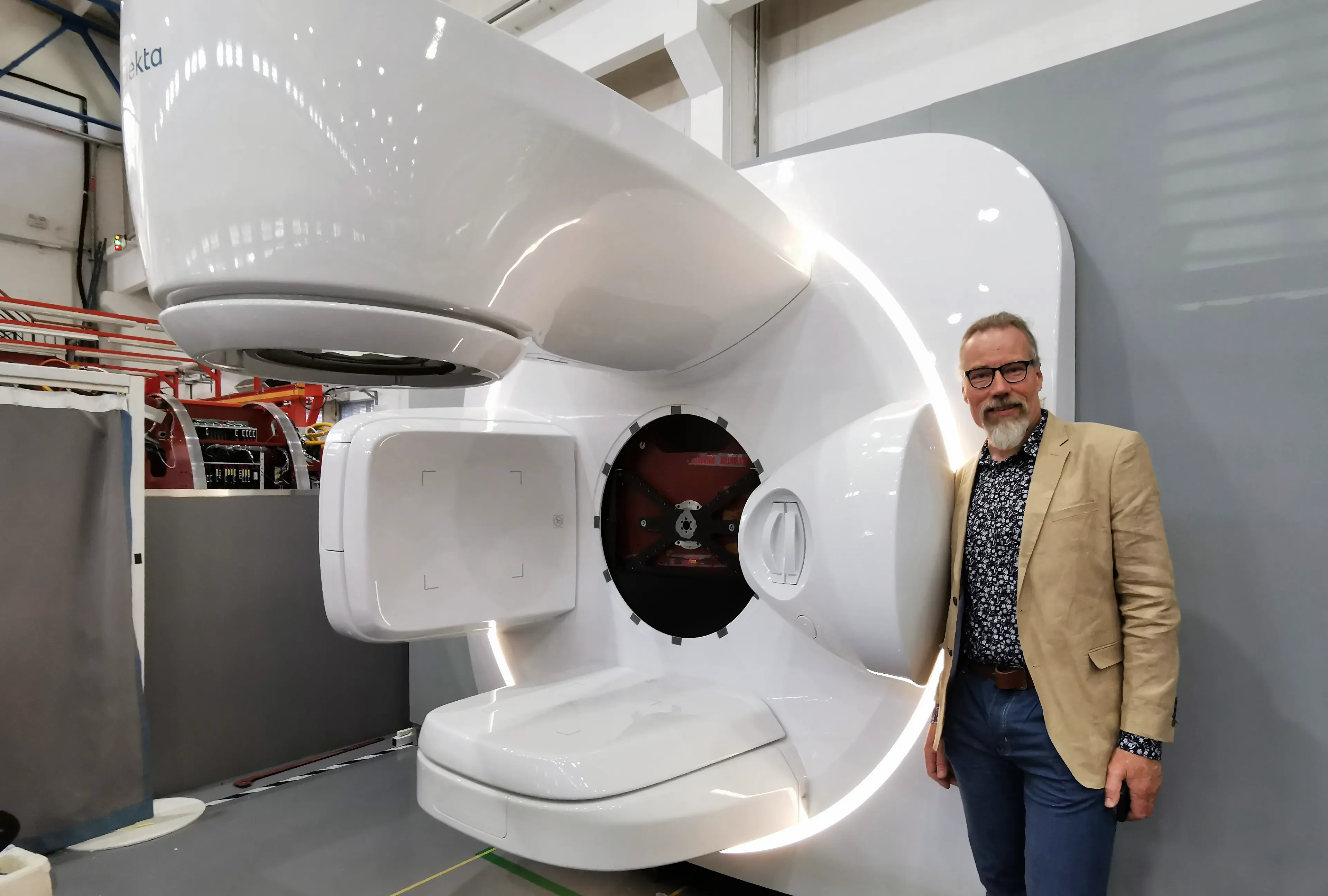
Elekta industrial designer Kjell Eldered recalls linac design overhaul that produced company’s Elekta Harmony system
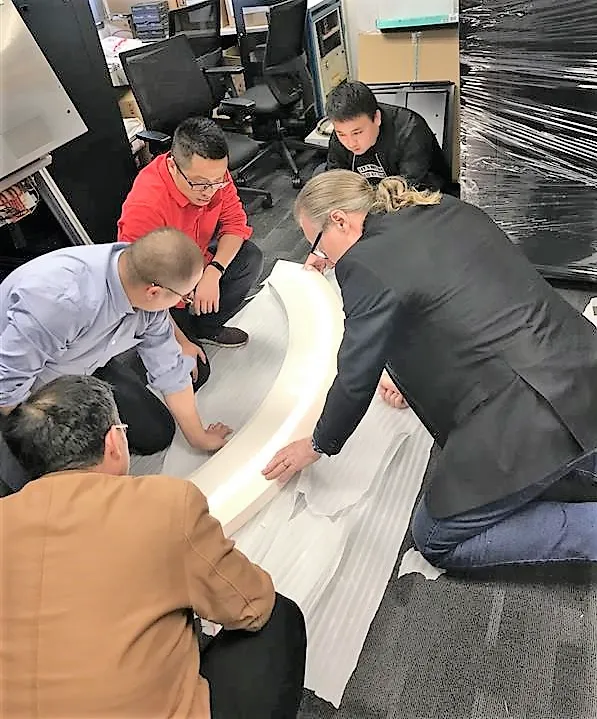
The Elekta Harmony linac emerged on the market in 2020, representing the company’s vision of a system that embodies unparalleled productivity, versatility and precision. Apart from this linac’s critical role in delivering radiation therapy to cancer patients, however, is the updated look and feel of Harmony and how patients and users experience the system. These factors are the province of industrial designers, who focus on the physical appearance, functionality and manufacturability of products. Elekta Senior Industrial Designer, Kjell Eldered, recounts how he led his team to create the radically different Harmony design and user interface that have impressed both users and patients.
Twenty years before Eldered would lead the industrial design of Elekta Harmony, he built a foundation of x-ray knowledge by doing design work for the Sectra mammography system, at the time the world’s only machine with a photon-counting detector.
“This was a very low dose system, which is critical for scanning healthy women,” he says. “I worked with Sectra for many years and it provided me with a deep understanding of x-ray systems and their complexity. It was beneficial experience to have when I began working as a contractor with Elekta in 2009 to help integrate the x-ray imaging workflow in Leksell Gamma Knife® Icon™.
“I like the challenge of designing these extremely complex systems to find the balance between functionality, aesthetic appeal, patient comfort, useability, and cost-to-produce.”
“I like the challenge of designing these extremely complex systems to find the balance between functionality, aesthetic appeal, patient comfort, useability, and cost-to-produce,” Eldered adds. “It’s more difficult, yet also more stimulating, than, for example, designing a chair or a spade. And I find it more gratifying to do something that can make peoples’ lives better.”
Still a contractor in 2015, Eldered served as the lead industrial designer of Elekta’s Leksell® Vantage™ Stereotactic System, featuring an open face design and innovative materials, providing improved patient comfort and potentially reducing treatment times. He began design work on the Elekta Unity MR-Linac in early 2016 and started his Elekta career as Senior Industrial Designer a year later.
The Harmony project
In clinical use since 2003, Elekta Synergy® – the world’s first IGRT linac and still a popular, reliable platform in many markets – was beginning to show signs of aging, at least from a design standpoint.
“The company observed that the system was becoming harder to sell in China and other Asian countries due to what was perceived as a dated design,” Eldered recalls.
In January 2019, Elekta Beijing Medical Systems, with the aid of a local design contractor, would begin the process of updating the look and feel of the Synergy platform to create the new linac design. On a trip to China to check on their progress, Eldered – leader of a team of Elekta industrial designers, human factors engineers and applications specialists – realized that the initial concepts would not work.
“While it was a very different look and feel, the platform, on paper, still seemed too big and awkward – it was not enhancing the product and didn’t really fit the linac’s mechanical structure,” he says. “The China team built a full-size mockup on my request and they agreed we would need to rework the design.”
Eldered began sketching and trying different concepts according to shape language that could be unique for Harmony, while retaining the key physical aspects of the Elekta linac family. His work with Elekta Unity and that system’s shape elements guided his thinking. Eldered also constructed his own full-size mockups (made of wood, Masonite, foam blocks) in his garage in Sweden, recruiting his daughters as “patients” to test the ergonomics of treatment setup.
“I wanted to achieve the feeling of integration, lightness and space. When the linac is in the ‘parked,’ non-operating position the machine should look like a smooth, unified whole.”
“I wanted to achieve the feeling of integration, lightness and space,” he says. “When the linac is in the ‘parked,’ non-operating position the machine should look like a smooth, unified whole. The kV imaging system is folded neatly away, there is a clear delineation of where the machine and bunker wall are, the design eliminates protruding bolts and other technical aspects, and the treatment couch is lower for initial patient positioning to accommodate even the smallest patients. All of these things support patient well-being by providing a calming environment.”
A critical Harmony design element is the system’s central hub monitor, he notes.
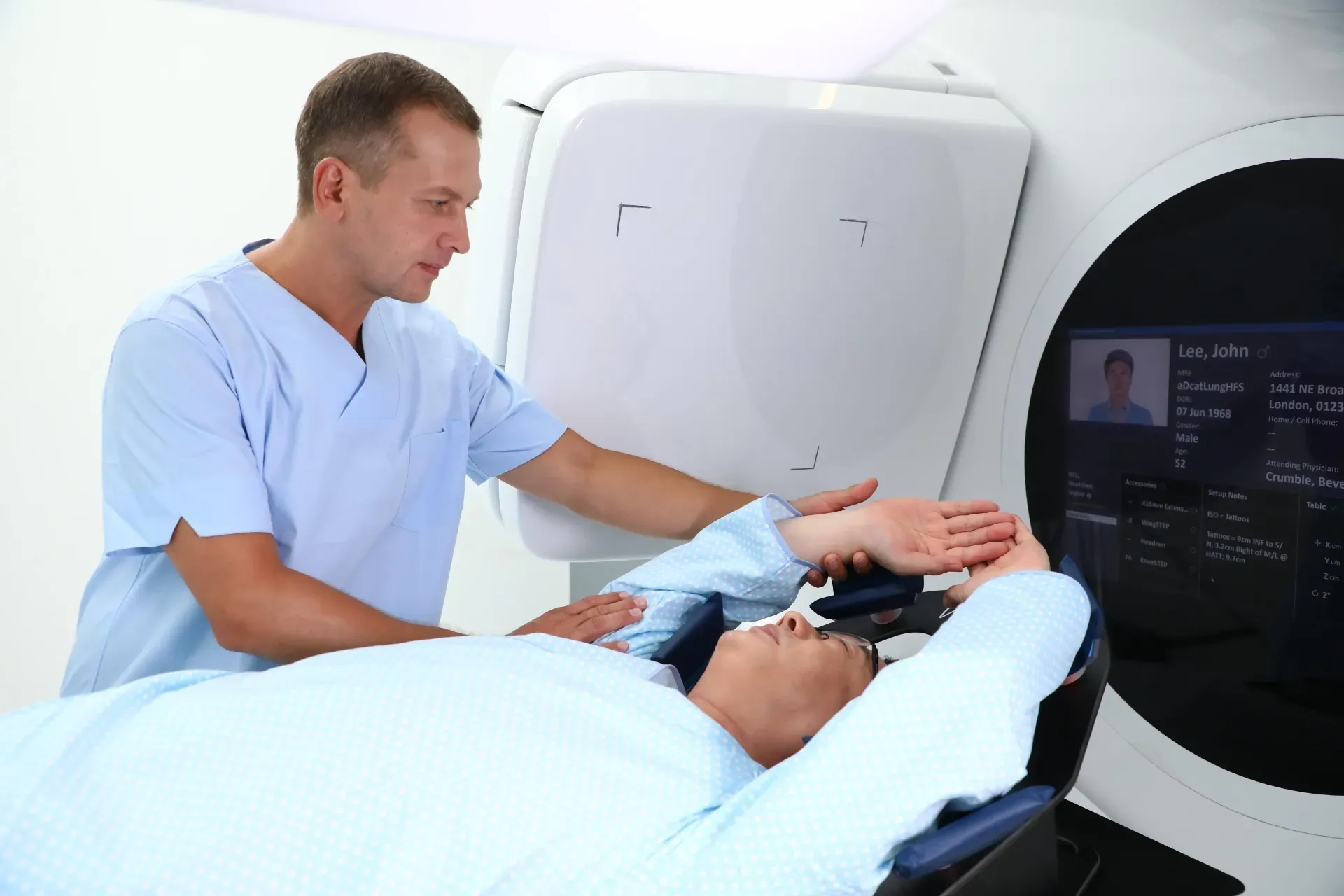
“With all the relevant patient information displayed on this LCD, clinicians or radiographers can stand beside the patient and just glance upward, while maintaining their head toward the patient, instead of moving around the treatment room and looking away,” Eldered explains.
“Similarly, the handheld controller – which used to be on the wall – was positioned on the PPS, enabling staff members to complete their clinical tasks at the side of the treatment table. This helps users maintain a close, physical and emotional engagement with patients and stay attentive to their needs.”
Eldered’s team made other refinements, including a simplified user interface (i.e., fewer keys) for increased ease of use and a simplified workflow.
By May 2019 – just five months into the design project – the team had made a full-size Elekta Harmony mockup and mounted it on a real radiotherapy gantry. After some final adjustments and testing, and a nine-month period to manufacture the covers, Elekta Harmony was ready for the production line.
“The final product has a simple, minimalist design language that shifts the focus away from the machine and prioritizes Elekta’s emphasis on the experience of the user and patient.”
“The final product has a simple, minimalist design language that shifts the focus away from the machine and prioritizes Elekta’s emphasis on the experience of the user and patient,” Eldered observes. “We spent a lot of time and effort removing design complications and refining the clean, streamlined appearance of Harmony. Rounded, clean shapes merge with sharp edges, which offers comfort while also highlighting the machine’s precision.”
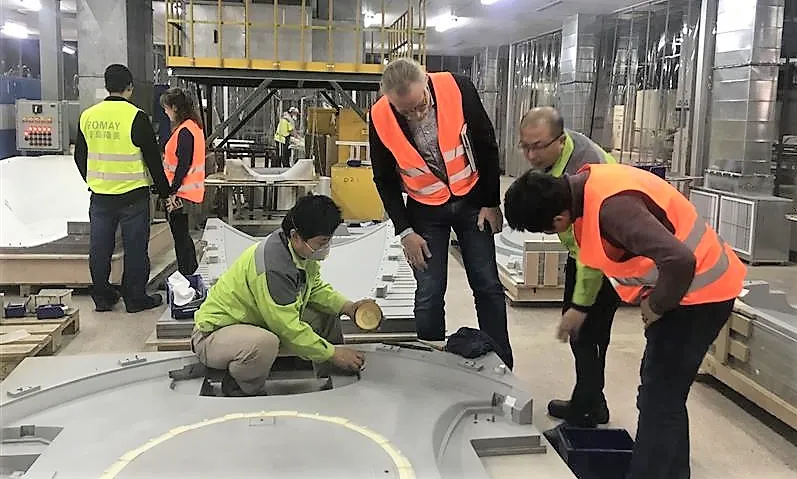
Although user and patient satisfaction are arguably equally important, from Eldered’s perspective the success of radiotherapy starts with the patient.
“If I can design a product that is very patient-friendly – one that patients feel comfortable and confident with – the treatment will go more easily,” he says. “In turn, if it’s easy for patients that will also make it easier for clinicians to work with. Everyone’s happy.”
Eldered closes by recounting a recent FOCUS article about a German hospital where two patients had the option to be treated either on the center’s Harmony system or another linac.
“I really liked the quote about the patients wanting to be treated on Harmony and declining treatment on the other system, because they said Harmony was ‘more beautiful’ and not as intimidating,” he recalls. “That’s pretty much what I try to achieve in industrial design, but I never expected to get that opinion that clearly from patients.”
Since 2020, Elekta Harmony has earned two design awards, from red dot and iF International Forum Design.
LAROX230531


